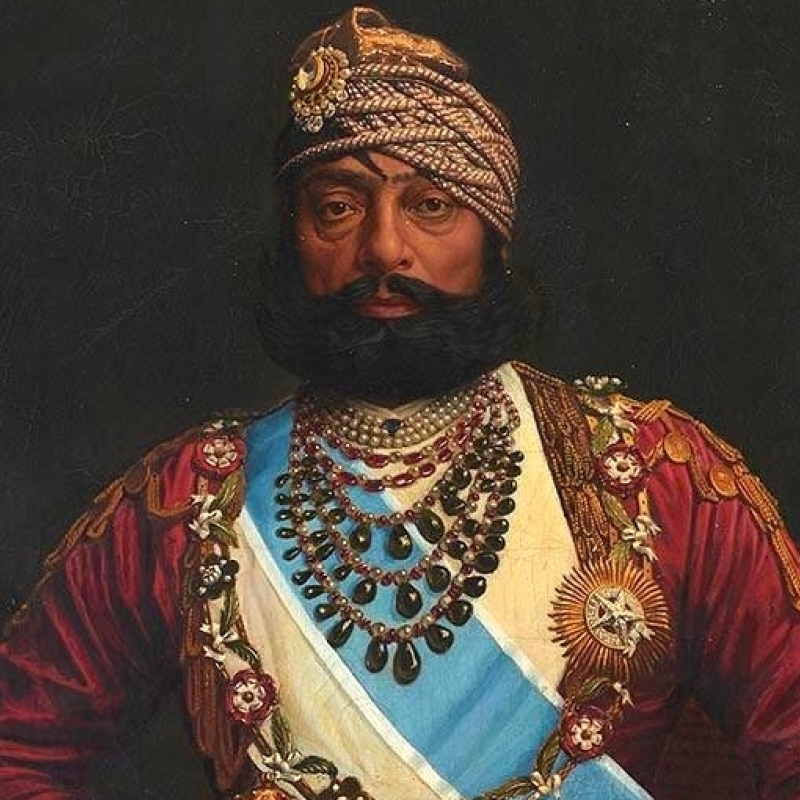One doesn’t often think of men when talking about jewellery, unless you’re in Rajasthan, where jewellery traditions are as much a male domain as a female one. From turban ornaments to beaded necklaces, rings and earrings, male jewellery traditions are not just about decoration, but also symbols of power, and even loyalty. We find out more. (Photo courtesy: Wikimedia Commons)
A trip to Rajasthan is never complete without souvenirs in the form of jewellery—be it silver, kundan, beads or clay. Interestingly though, the state’s association with beautiful and ornate jewellery traditions is as much a male domain as a female one. As social and political hierarchies evolved, shaped by competing monarchs of princely states and desert-driven nomadism, ornaments became part of its expansive language of visual symbols. In this context, ‘jewellery provides an easy clue in identifying the caste, social and marital status of the wearer,’ says author Tripti Pandey.[1]
Jewellery is not only ornamental but has amuletic properties too. Believed to provide health and astrological benefits in Ayurvedic and Hindu astrological traditions, people stimulate acupressure points using piercings and jewellery.[2] Gemstones are chosen according to astrological charts, as is the metal used—silver, embodying the moon, or gold, the sun.
Also read | How Vijaydan Detha 'Bijji' Celebrated the Timelessness of Rajasthani Folklore
Today, the practice of wearing much jewellery by men is mostly confined to special occasions and festivals, although there are some daily-wear pieces. Certain ornaments, however, have been forgotten and are now found only in museums. Here, we look at some of the most common jewellery pieces worn by men across Rajasthan which are integral to the state’s visual traditions.
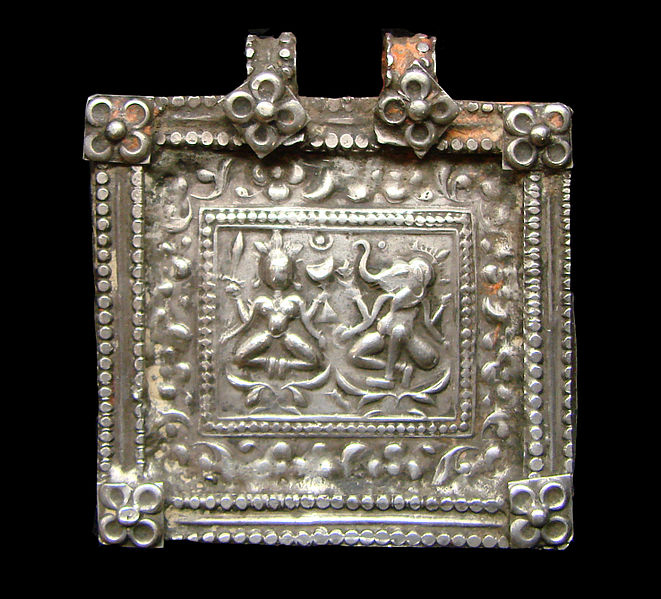
Protective Amulets
‘The form and function of amuletic jewellery arose from the primal need to protect the self against the harmful effects of the many evil spirits and evil “eye”. Amulets…deflect danger, protect from evil and even have the power to attract good,’ opines scholar Usha Balakrishnan.[3] These—worn as necklaces or bracelets—sometimes were containers called patri to carry the actual amulet.[4]
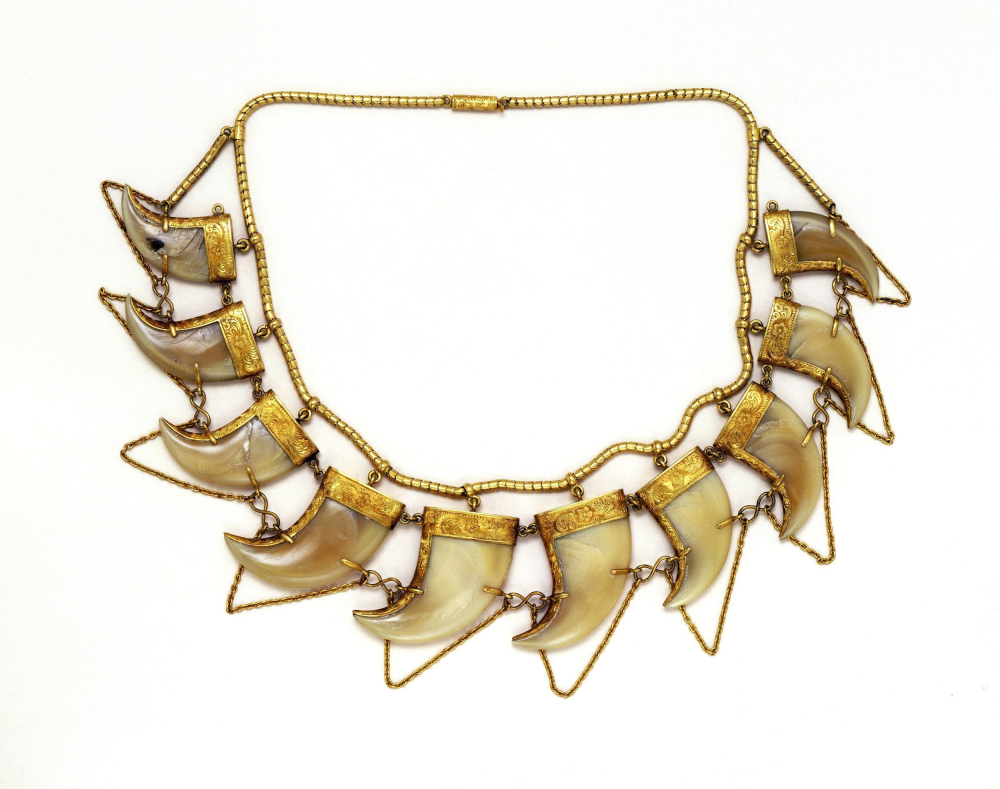
One striking example is the Sher-nakh-jantr—an amulet curved similar to the claw of a tiger—or in some cases, actual tiger teeth are set in gold and silver. Here, ‘claws and teeth of certain animals signify power’ and, therefore, those of a tiger are seen as particularly powerful.[5]
For Financial Protection
British industrialist Sir Thomas Wardle commented in 1901 that ‘the skill in India in making brooches and bangles out of silver rupees is astonishing, full of patterns and flowing format’, something which remains a widespread practice for both men and women.[6] This was practical as well as decorative. The coins had an intrinsic value and using them as jewellery added to the financial security of the wearer.
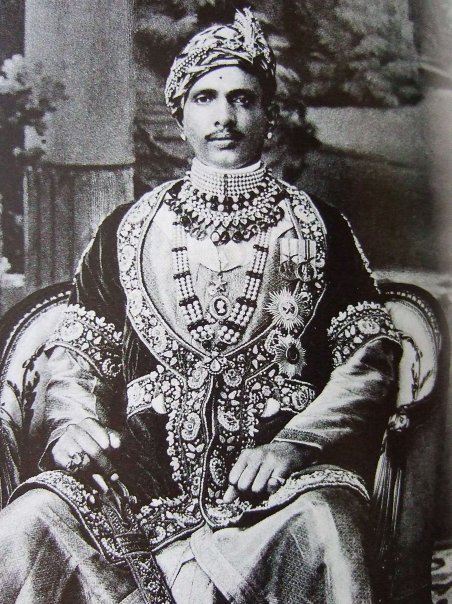
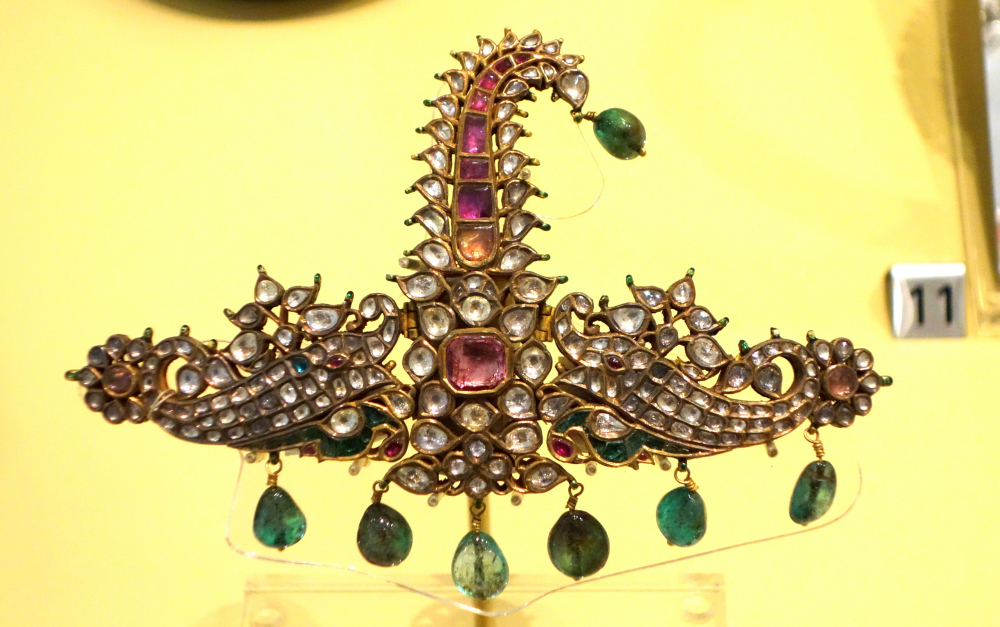
Turban Ornaments
The sarpech is a fusion of the Mughal kalgi (feathered ornament) and the Rajput sarpatti (turban band), a feather shaped brooch flanked by a band on either side. It is a symbol of royalty, or royal favour, historically worn only by the Prince and his entourage. Culturally, it signalled sovereignty, and was favoured by many princes by the early twentieth century, evolving into a more intricate piece. Today, many Rajput grooms wear a sarpech as it is a contemporary wedding trend.
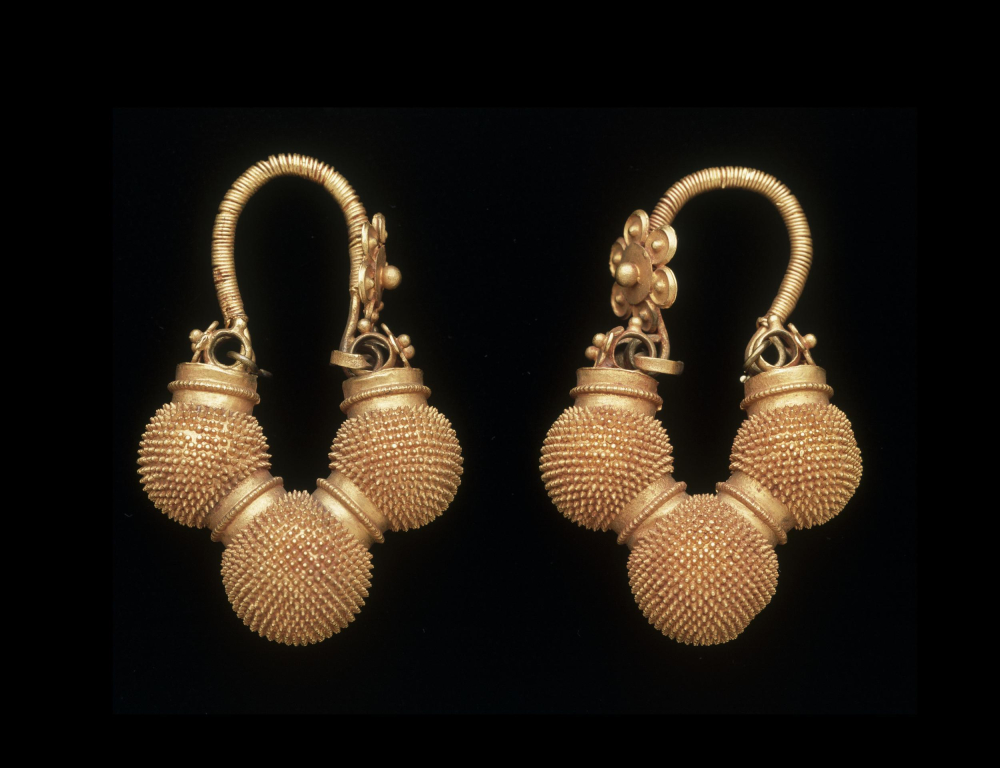
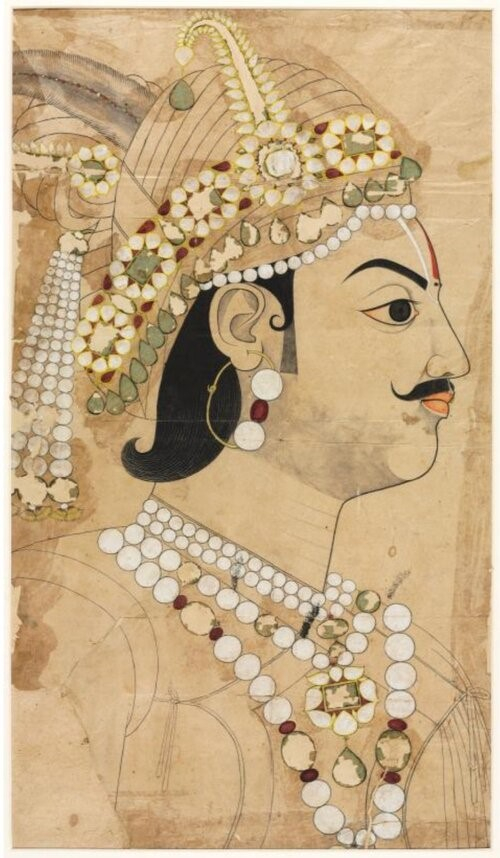
In the Ears
Piercing the ear is often celebrated as an event in many parts of India, including Rajasthan, as it is believed that the ear has the most pressure points that keep the body healthy and fit. Hence, till date, earrings remain a common piercing and form of jewellery adornment.
In Earrings: Ornamental Identity and Beauty in India, Waltraud Ganguly mentions piercing earlobes as a prophylactic stimulation.[7] Children’s ears were pierced under the age of three, with the male child’s right earlobe pierced first, as this was considered the masculine side of the body.
Also read | The Evolving Storyline of Rajasthan’s Kaavad
There are different kinds of earrings worn across Rajasthan. There are the murki and jhela—small six-petal flower-shaped studs with enamel colours. Then the jhumka, gold or silver hollow hoops worn among all classes in Rajasthani society.[8] Gokhru earrings, worn by men from the Bhil community, stretch from the helix to the lobe. These often feature ‘babul’ or thorn goldwork.
For Rajput Princes, balas—gold wire hoops strung with precious stones—are common.
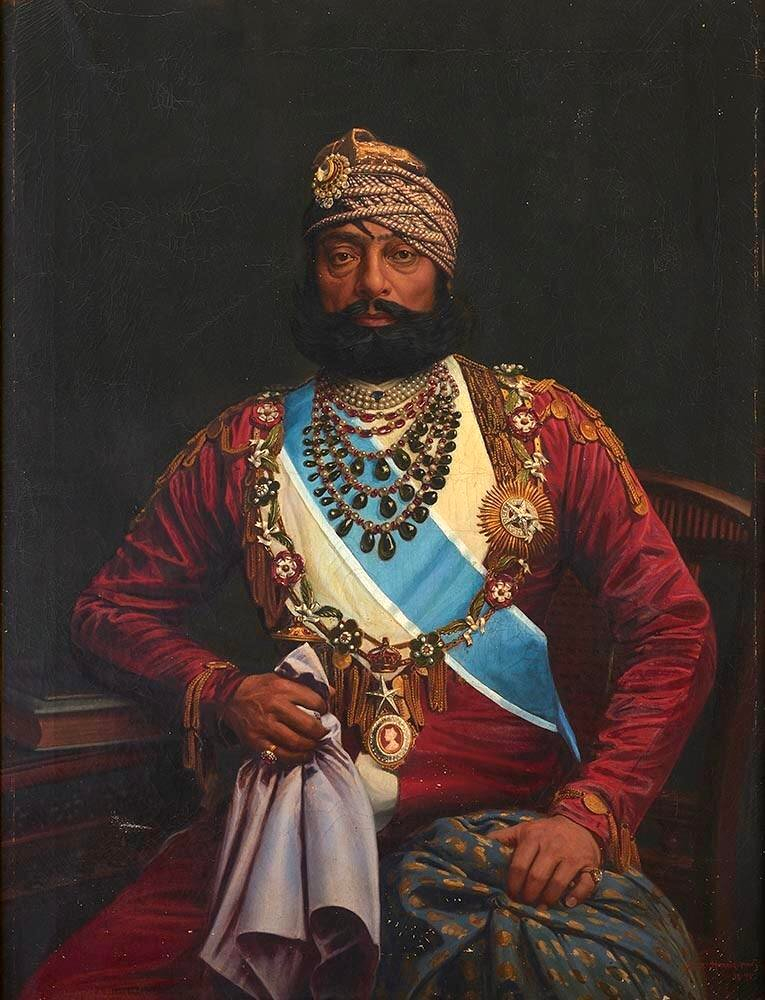
Neck Decorations
Men from Rajasthan often wear a variety of necklaces at one time. The largest and most impressive is the kanthi, on which ‘the finest gems in an Indian treasury were mounted into impressive jewellery for a ruler to wear in a durbar, a ceremonial public gathering’.[9] Royal or wealthy men also usually wore strings of diamonds, emeralds and pearls, called malas, in contrast to heavy kundan jewellery of the women. Men of all communities are also commonly seen to wear the hansli, a collar-like necklace. Its name was derived from the clavicle, which is where this ornament rests.
In colonial India, Rajput Princes also wore livery collars, also known as chains of office, which are commonly seen in the UK, to communicate their loyalty to the crown by wearing prominent jewellery with British insignia.
Arm and Hand Jewellery
The popular and well-known kada is a bracelet commonly worn by men across North India. Among royalty, they are made of silver or gold with an enamelled inner plate, featuring animal and floral motifs. Tripti Pandey, though, says, ‘silver thick bangle or kadas are popular with village men.’[10]
Other ornaments include the bajubands/bazubands, or upper-arm armlets and the beenti (or, binti), a ring worn by men across India, set with a gemstone in accordance with the wearer’s astrological chart. It’s believed that the soft part of the fingers is an acupressure point and beneficial for physical and spiritual health.
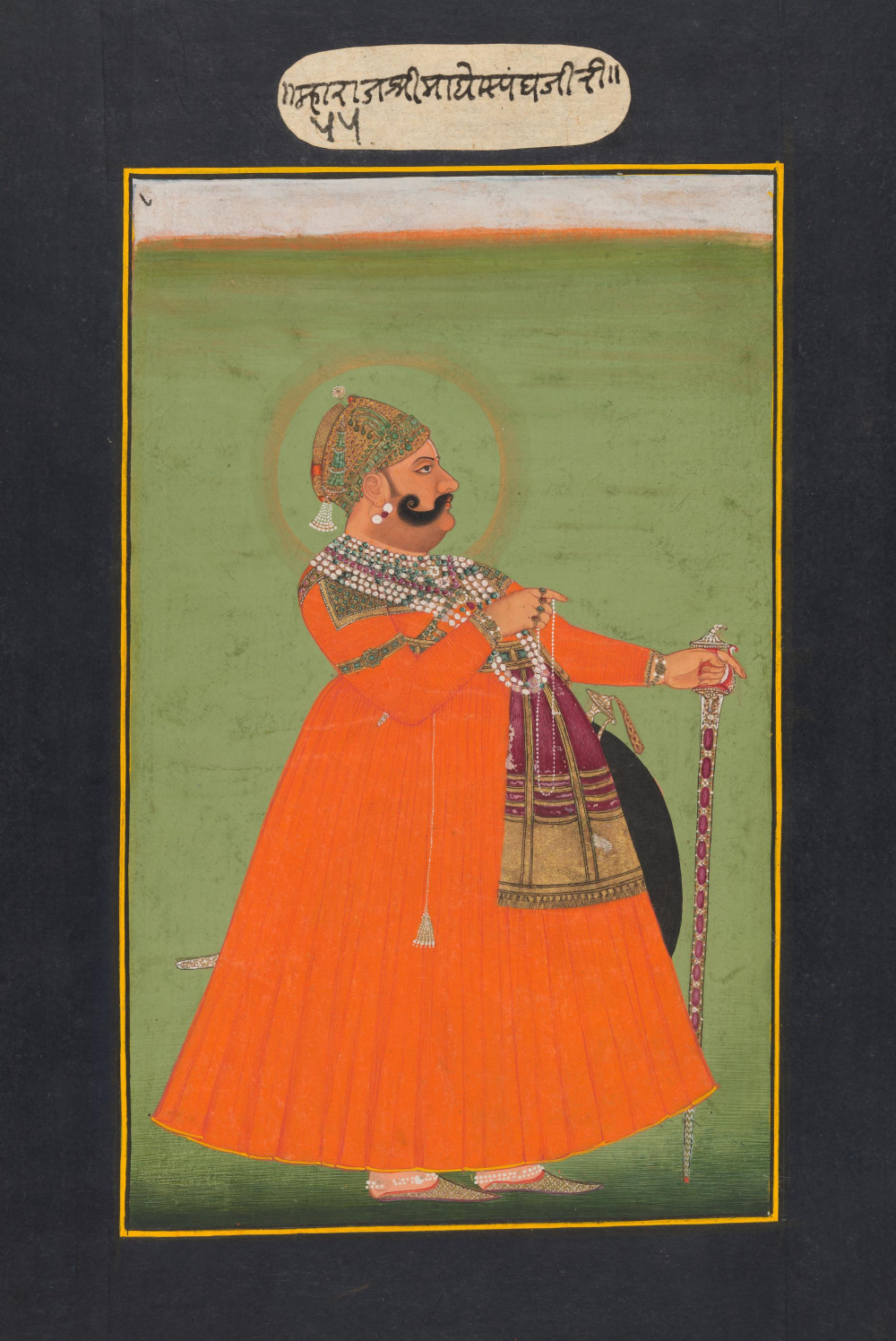
Torso Decoration
The kamarpatta, pictured here on Maharaja Jaswant Singh of Jodhpur, was a decorative belt used to hold a pata (sword) or katar (dagger), often with a jewelled belt buckle made of precious metal and jewels. As Haider and Stewart identify in their book Treasures from India: The Al Thani Collection, by the late eighteenth century, due to British colonial fashion’s influence, the kamarpatta or cross-belt, was largely worn diagonally across the chest as well as around the waist.[11]
This jewellery piece had a functional use, but also represents the martial nature of Rajput communities as the weapon and belt still plays an important part in ceremonial dress to date.
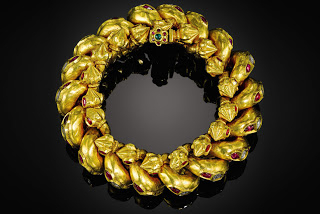
Leg Adornments
Dastband Almas, or anklets, were an important indicator of status in Rajput royal court as ‘they were awarded by the ruler as princely recognition and were worn on the right ankle of the recipient in a custom known as ‘Ta’zim’, or honour. The investiture of the anklet entitled the recipient to a position at durbars and to certain legal privileges and exemptions.’[12]
So, while this list attempts to be comprehensive, it cannot hope to cover the complexities of centuries-old jewellery traditions of Rajasthan, and how men continue to wear jewellery. These ornaments are interwoven into the fabric of everyday life – not only for decoration, but health benefits, and as a social and political indicator of a man, and his relationship to his community, religion and self.
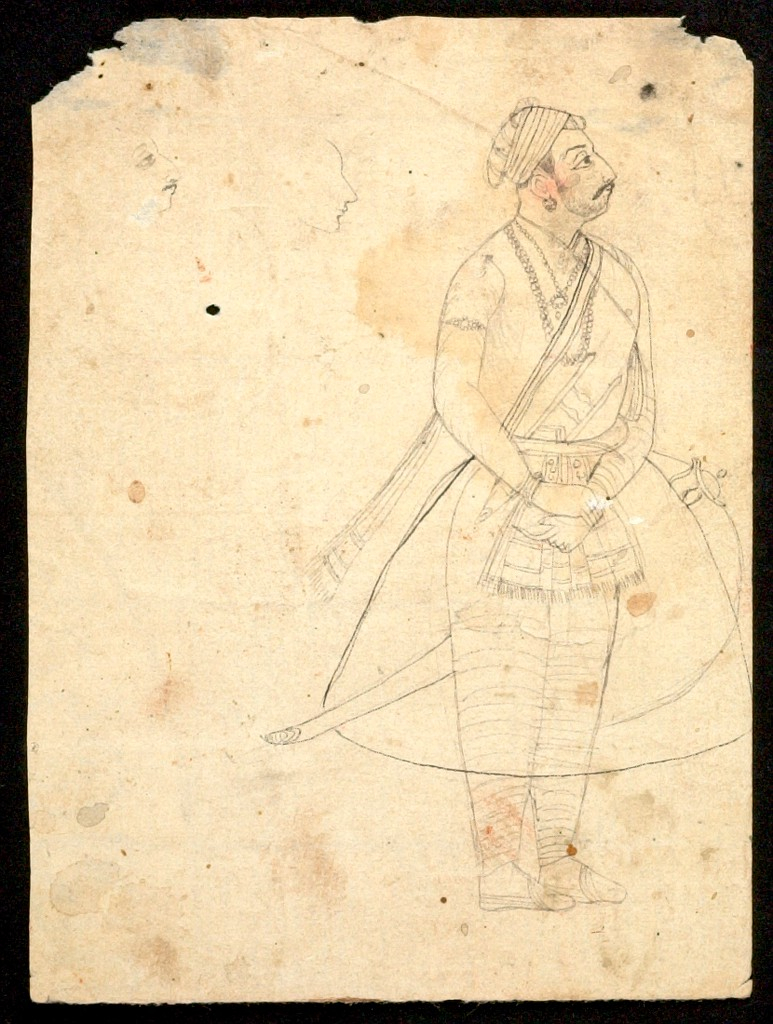
This content has been created as part of a project partnered with Royal Rajasthan Foundation, the social impact arm of Rajasthan Royals, to document the cultural heritage of the state of Rajasthan.
A version of this article was published in Mint Lounge.
Note
[1] Tripti Pandey, Rajasthan’s Silver Jewellery: A Living Legacy (Rupa Publications India, 2003), 134.
[2] Ibid., 113.
[3] Usha R. Bala Krishnan, Meera Sushil Kumar, and Usha R. Bala Krishnan, Indian Jewellery: Dance of the Peacock (Mumbai; Portchester: India Book House, 2001), 238
[4] Dave Dushyant, ‘Motifs in Ornamentation: Special Reference to Rajasthani Kundan Meena Jewellery 16th to 21st Century’ (Banasthali Univesity, 2017), 152. Accessed August 11, 2020. https://shodhganga.inflibnet.ac.in/handle/10603/190792.
[5] Tripti Pandey, Rajasthan’s Silver Jewellery: A Living Legacy (Rupa Publications India, 2003), 184.
[6] Thomas Holbein Hendley, 'Indian Jewellery', Journal of Indian Art, 1909. Accessed August 11, 2020. http://archive.org/details/IndianJewelleryHendley> [accessed 11 August 2020].
[7] Waltraud Ganguly, Earring: Ornamental Identity and Beauty in India (New Delhi: B.R. Publishing Corporation, 2007), 16.
[8] Dave Dushyant, ‘Motifs in Ornamentation: Special Reference to Rajasthani Kundan Meena Jewellery 16th to 21st Century’ (Banasthali Univesity, 2017), 147. Accessed August 11, 2020. https://shodhganga.inflibnet.ac.in/handle/10603/190792.
[9] Navina Najat Haidar and Courtney Ann Stewart, Treasures from India: Jewels from the Al-Thani Collection (Metropolitan Museum of Art, 2014).
[10] Tripti Pandey, Rajasthan’s Silver Jewellery: A Living Legacy (Rupa Publications India, 2003), 194.
[11] Navina Najat Haidar and Courtney Ann Stewart, Treasures from India: Jewels from the Al-Thani Collection (Metropolitan Museum of Art, 2014).
[12] Ibid.
